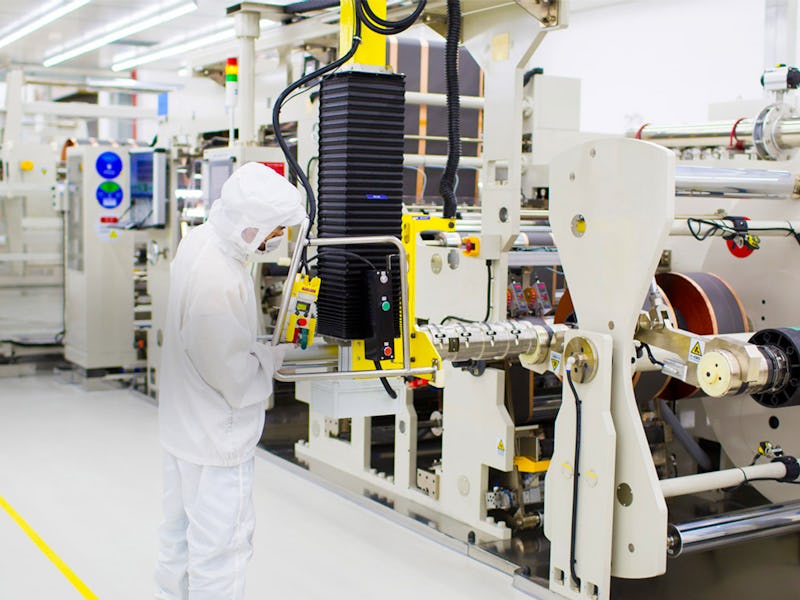This Chinese Battery Plant Will Be Bigger Than the Tesla Gigafactory
It could even be the world's largest battery factory.

When complete, Tesla’s Gigafactory will produce batteries at a faster rate than bullets firing out of a machine gun. But that’s not as fast as what one factory plans in China. Contemporary Amperex Technology Ltd., CATL for short, is building a monster-sized factory on the edge of the southeastern city of Ningde. The Ningde plant could steal the crown from Tesla as the largest battery factory in the world.
“It will not be easy to surpass Japanese and South Korean companies,” Neill Yang, CATL’s marketing director, told the Financial Times. “But we think over the next 10 years, there may only be 10 lithium battery producers left, with the top three taking 60 percent of the market.”
The factory is expected to be huge. To put it into perspective, it’s worth considering the size of the Gigafactory. Elon Musk’s pride and joy, a 5.8-million square foot behemoth, will produce enough batteries every year to store 35 gigawatt-hours of electricity. One gigawatt-hour is enough energy to supply one billion watts for one hour. CATL’s factory produced five gigawatt-hours in 2016, but by 2020 it plans to reach an output of 50 gigawatt-hours.
Overall, Benchmark Mineral Intelligence is tracking the construction of 15 Gigafactory-like plants, set to provide 230 gigawatt-hours of output, enough to power 3.5 million electric cars. The Ningde plant is by far the largest of the group.
CATL's plant is located on the outskirts of the city.
Valued at $11.5 billion, CATL is China’s fastest growing battery maker, and it’s poised to take advantage of a surge in demand as electric cars take over the roads. In 2016 alone, the factory tripled its production output, as the country pushed harder toward electric vehicles. The government offers heavy subsidies on electric vehicles: the two-door Chery eQ costs the equivalent of $23,000 before subsidies, but that drops to $8,600 after. The country is aiming for five million electric cars on the road by 2020, and ideas like the plan to remove all of Beijing’s gas-powered taxis will mean more demand over the next few years.
The company employs over 1,000 engineers, but it’s aiming to add more to the team to reach its goals of meeting production targets. It’s one of three battery makers targeted by the country to meet production goals, with the government offering $15 million if it’s successful. But one production line costs $40 million, and even before its completion the Tesla Gigafactory has already surpassed $1 billion in construction costs.
“We continue to walk where the country guides us,” CEO Huang Shilin told Reuters. “We hope by 2020 we can achieve performance and price that lead the world.”
The company is focused on China’s market, but it’s also signed a deal with National Electric Vehicle Sweden, which owns the Saab automaker. Yang has also said CATL wants to work with Tesla in the future. If such a deal came to fruition, Tesla’s Gigafactory may not seem so giga after all.